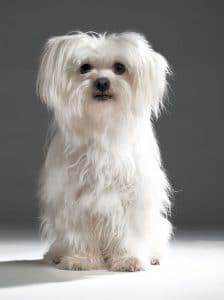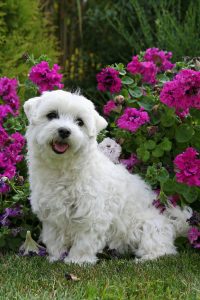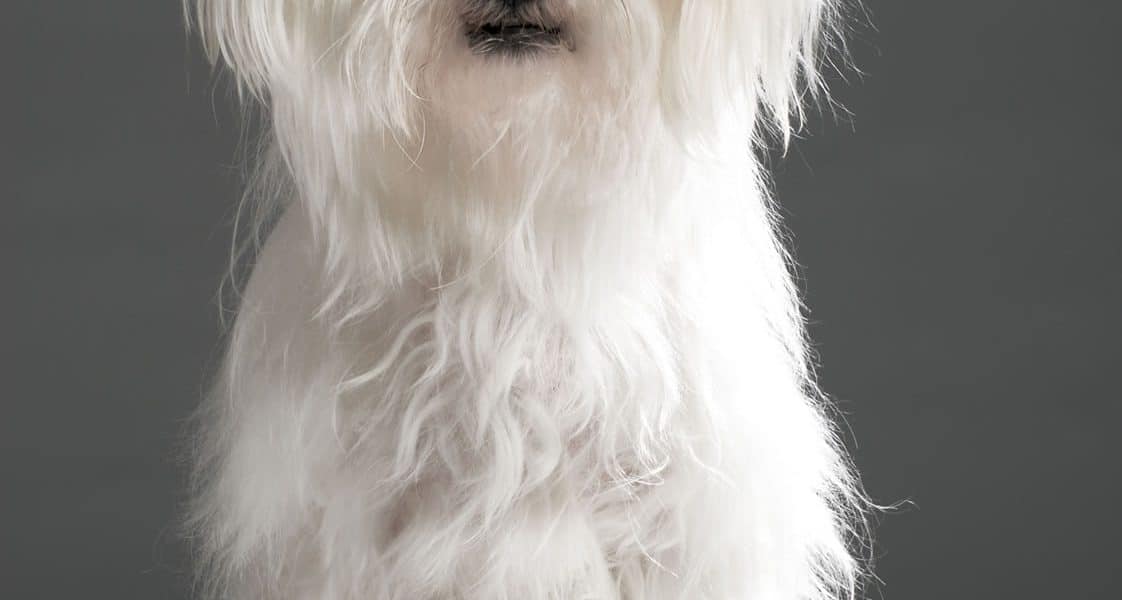
The Maltese is a toy breed and a companion dog, which has been in existence for centuries. Even though its exact origins are not known, it is believed that the Maltese de
There are several accounts that refer to the Maltese as a valuable and beautiful dog. The oldest record was the one found in an Etruscan town. It was on a Greek amphora dating as far back as 500 B.C. There are also references to Maltese in both Ancient Roman and Greek literature. Greeks have dedicated tombs with paintings of their Maltese.scended from a Spitz type dog. The breed name is thought to have originated from Malta.
Written accounts have proven Maltese to be an esteemed and privileged pet in the household of the rich and powerful. To date, the Maltese has maintained such status. One popular Maltese was Issa, a pet of a Roman Governor of Malta, Publius during the time of the St. Paul the Apostle. Issa appeared in paintings and was the subject of a Roman poet’s epigram.
The Maltese has retained the reputation of affluence and nobility from centuries back. It is because of this that the breed has continued to be an epitome of refinement and cleanliness. This toy breed has small and almost dainty appearance but is very spirited and active. In 1888 the American Kennel Club recognised it as a breed. Eventually, the Federation Cynalogique Internationale of FCI recognised the Maltese as a breed in 1954.
The Maltese has a compact body with length proportionate to the height. A full-grown Maltese weighs 2.3 to 5.4 kilograms. Breed standards dictate the ideal to be in the range of 1.8 and 3.2 kilograms.
The Maltese has a lightly rounded skull, longhaired dropped ears. Their expressive look can be attributed to their dark eyes with dark skin pigmentation around them. This pigmentation is often referred to as ‘halo’. The nose varies in colour depending on sun exposure. Without sun exposure, the nose can fade to as light as pink or light brown, but will be black when exposed to a good amount of sun.
The most distinct characteristic of this breed is their long, silky, pure white coat, which covers from head to feet. Although not desirable, cream is permissible along with a light lemon colour on the ears. An orange tint is considered an imperfection. Maltese have single coating of long, flat hair, which is sometimes worn in a topknot to prevent the coat matting or breaking off. They have little shedding and are considered to be suitable dogs for people with allergies, being one of the breeds described as hypoallergenic. Maltese will need a daily gentle brush to keep their coats free from matts and tangles. Owners who do not show their Maltese often keep the coats in a short puppy clip to minimise groming. Eyes also need to be cleaned on a daily basis as Maltese are prone to tear stains.

This breed, if healthy, can live as long as 15 to 17 years. There are a few health problems to which they are prone, such as patellar luxation as well as teeth and eye problems. They need to be kept out of strong sunlight, they’re very susceptible to sunburn, especially along the hair parting. These dogs do not do well in damp conditions either as they get chills easily.Close supervision of Maltese is recommended when around children as they have a tendency to become snappish and impatient. Early socialization should help reduce this behaviour but if overly pampered, they can develop behaviour problems and can display aggressive behaviour towards visitors. Although smart, housebreaking them may be difficult. For their small size, this dog breed is fearless. Maltese will not hesitate to bark and sound the alarm on instances of suspicious people or noises. In some countries, this breed type is one of the most abandoned breeds, mainly due to their tendency to bark constantly.


